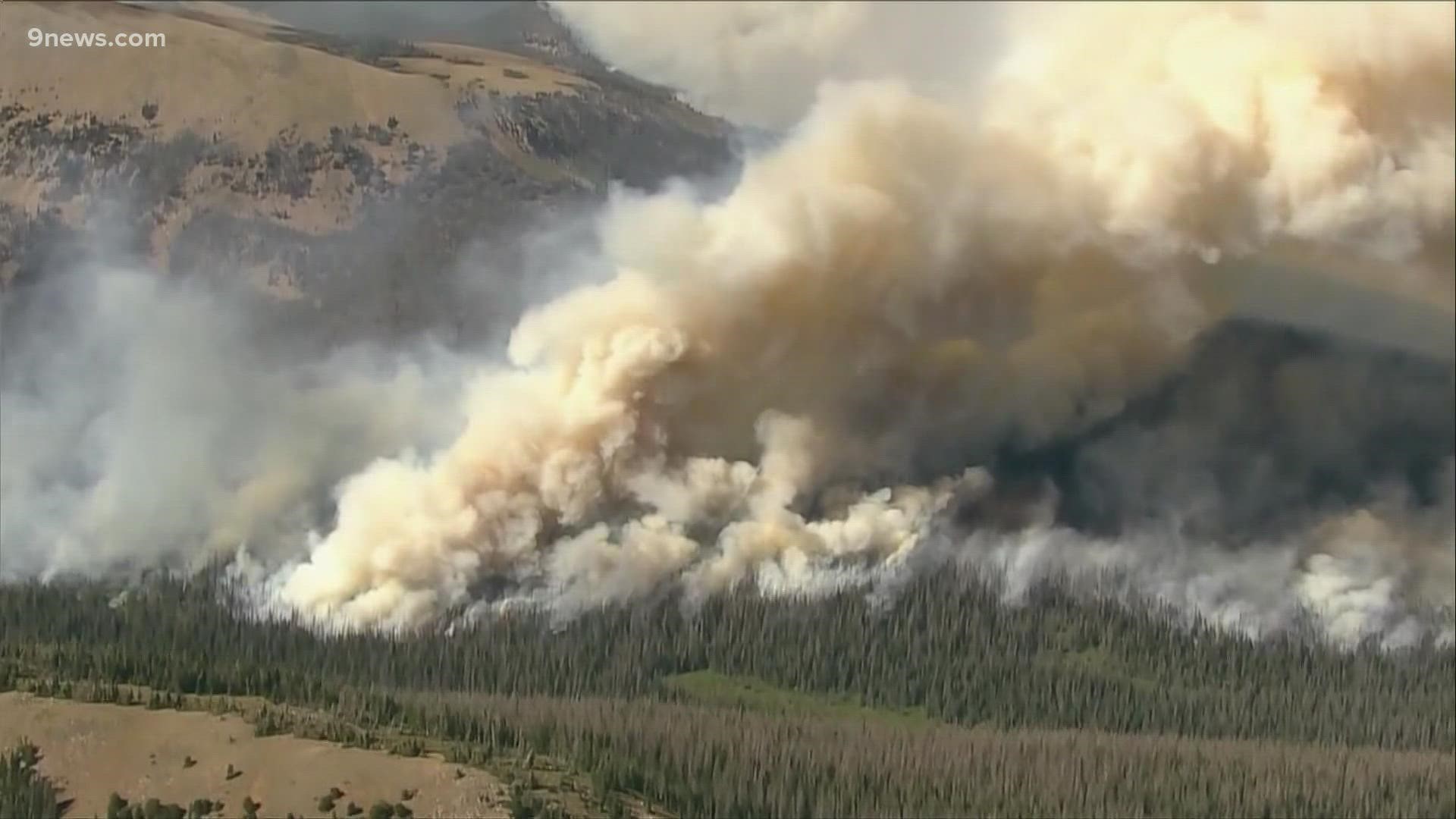COLORADO, USA — What will Colorado’s forests look like years from now after the recent wildfires?
Researchers are studying the trends of warmer, drier weather in the state and the impact they could have on forest recovery.
Kyle Rodman, a research scientist who studied Colorado's forests while working at the University of Colorado said square miles of terrain are burning faster and hotter.
"We’ve seen a general increase in the amount of fire," said Rodman, who is now working at the Ecological Restoration Institute at Northern Arizona University.
The intensity of Colorado’s wildfires are changing the look of the state’s mountains.
"I wouldn’t say we are at risk of losing forests everywhere, but there are places that will look very different in 20 to 50 years," said Rodman. "There was more than double the area of severe fire last year than there was in 2002."
Last year’s Cameron Peak fire burned for 112 days – surpassing the Hayman Fire – becoming the largest on record in the state.
Rodman points to trends of warmer and drier weather in the state creating ideal fire conditions.
"If you want to be able to predict how much fire there's going to happen in any given year, a lot of that has to do with the drought conditions," said Rodman.
The impact on the climate continues long after the flames are out.
Some areas burned by fire are not seeing forest regrowth they once did.
"Even in some places where we have trees nearby, things are just too warm and dry for the forest to recover," said Rodman.
Researchers say burn scars are so wide – some of the state’s most iconic species like Ponderosa pines and Douglas fir may not recover in some areas at lower elevations such as Colorado's Front Range Mountains.
"A lot of the trees we see in and around the front range for example require live trees nearby to disperse seed into places that have burned for the forest to recover again," said Rodman.
Studies show some trees like aspen and oak do better with regrowth after a fire. In some cases, a different species may move in or trees migrate to higher and cooler elevations.
Prescribed burns and cultural burns help prevent future wildfires but researchers say when it's windy and warm in Colorado – there is a risk those could get out of control.
Researchers say finding alternative energy sources is one solution to lower temperatures and control wildfire but it could be years before we see the impact of those changes.
Rodman said, "We haven’t really seen the full effects of warming just from what’s in the atmosphere today. There's inertia in the system. The Earth is going to continue to warm, even if we cut the emissions today."
SUGGESTED VIDEOS: Colorado Climate

